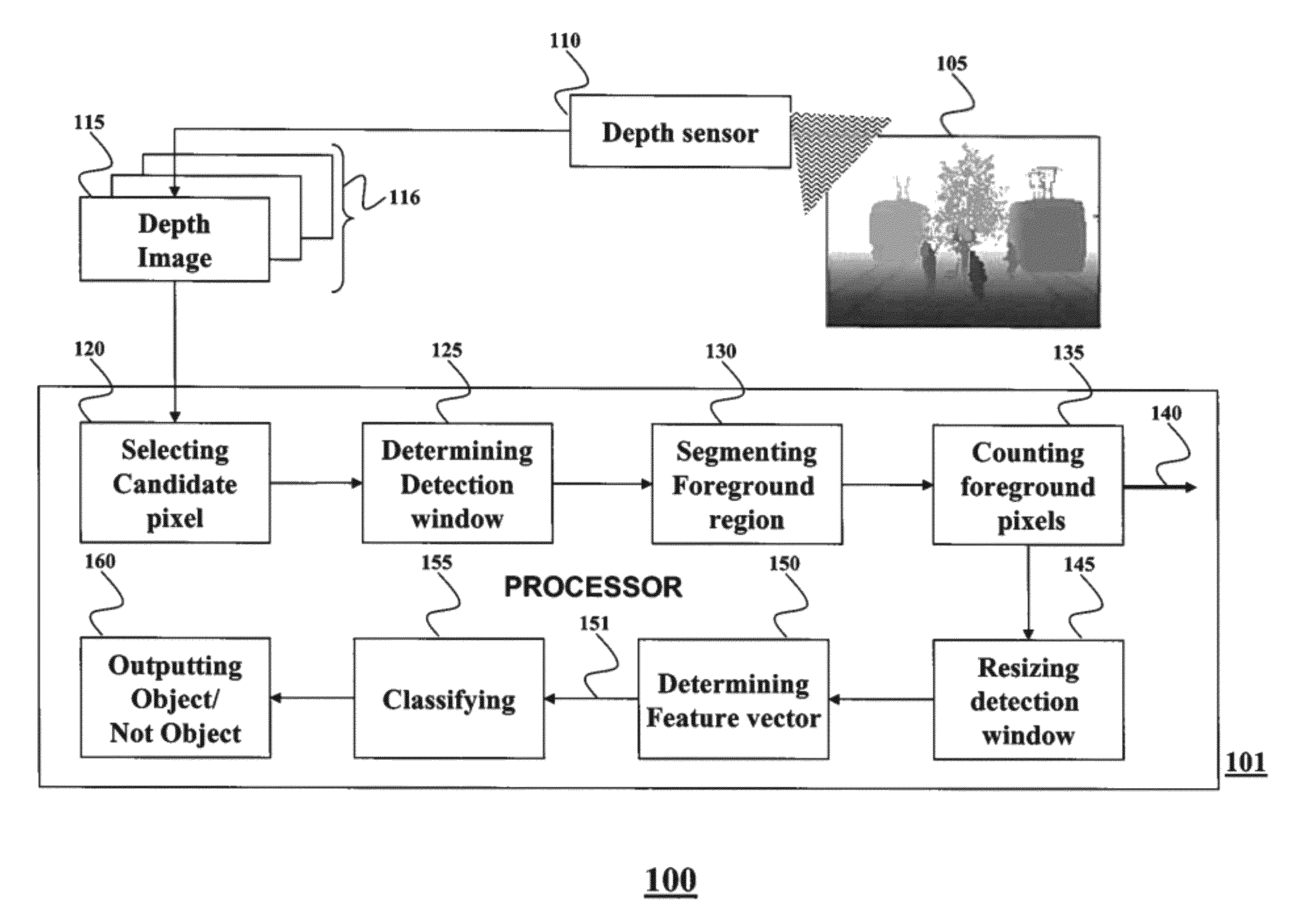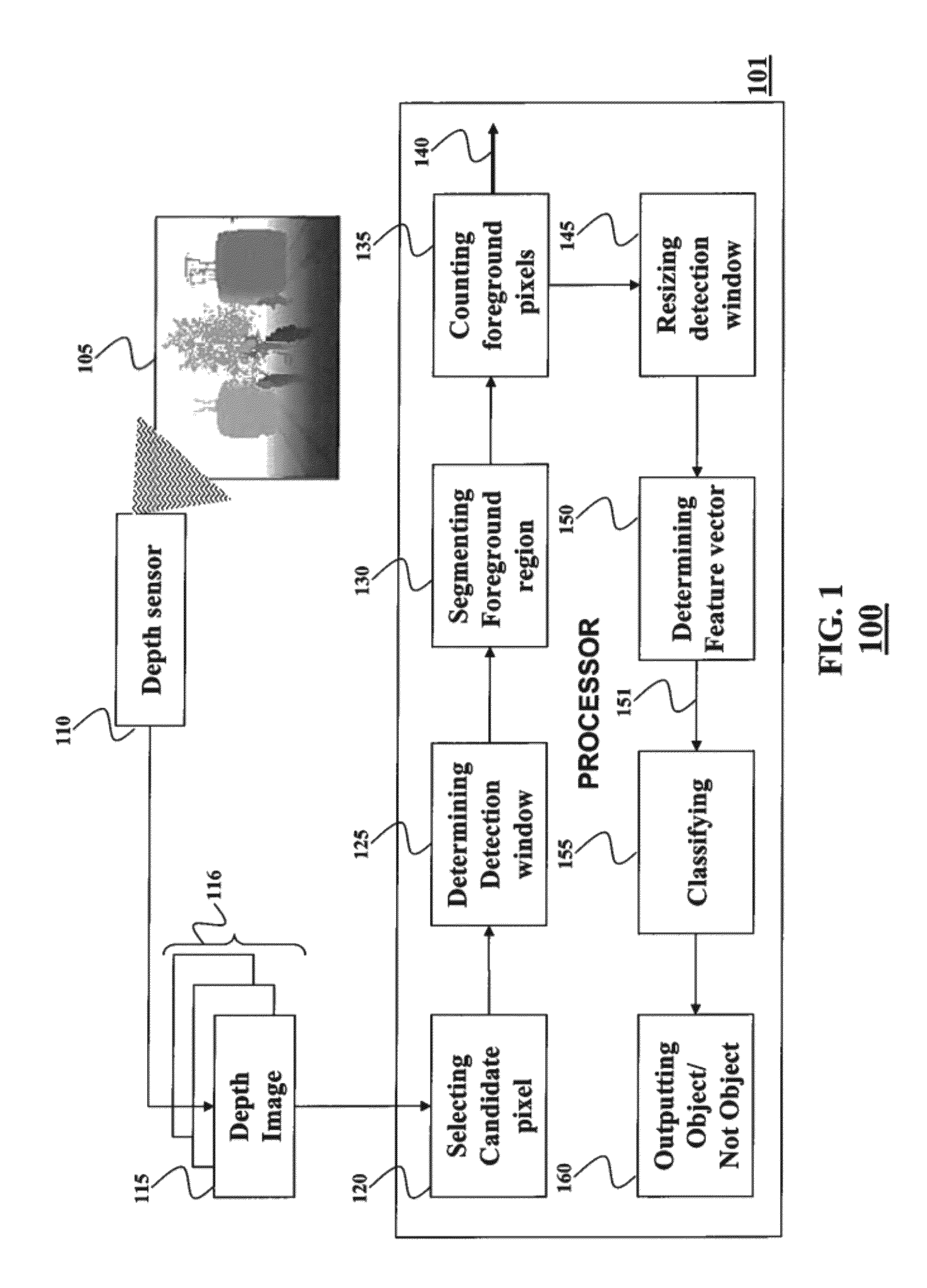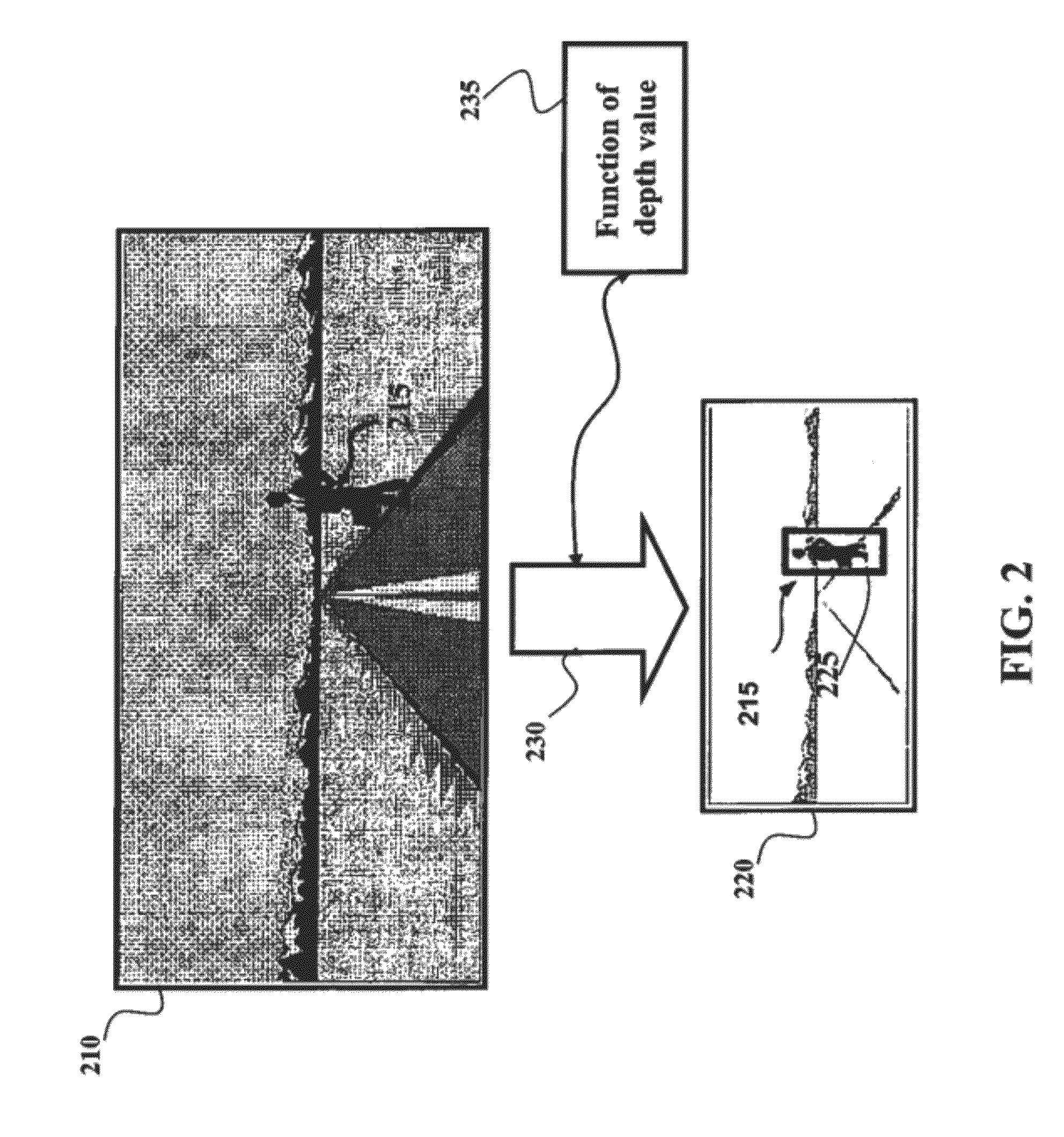Object detection in depth images
a technology of object detection and depth image, which is applied in the field of object detection in depth image, can solve the problems of not being applicable to some surveillance applications, affecting the efficiency of the method, and affecting the accuracy of the detection method, so as to avoid the calculation of the size of the detection window during the object detection, avoid the effect of classifier scanning and improved method efficiency
- Summary
- Abstract
- Description
- Claims
- Application Information
AI Technical Summary
Benefits of technology
Problems solved by technology
Method used
Image
Examples
Embodiment Construction
[0024]FIG. 1 shows a block diagram of a method 100 for detecting an object in a depth image 115. The depth image of a scene 105 can be acquired by a depth sensor 110. The depth sensor can be any type of sensors configured to produce the depth image, such that each pixel in the depth image has a depth value indicative of a distance between the depth sensor and a corresponding object in the scene.
[0025]For example, light such as infrared (IR) light can be irradiated on an object, and a time of flight (TOF) is measured by sensing reflected light to measure a distance (depth value) from a depth sensor to each part of the object. The depth image 116 can be part of a time sequence of the depth images 116, e.g. a depth video. The method 100 can be implemented using a processor 101.
[0026]As shown in FIG. 2, the object to be detected in the depth image belongs to a specific class of objects, e.g., people, or cars. Some embodiments of the invention are based on a realization that for each can...
PUM
 Login to View More
Login to View More Abstract
Description
Claims
Application Information
 Login to View More
Login to View More - R&D
- Intellectual Property
- Life Sciences
- Materials
- Tech Scout
- Unparalleled Data Quality
- Higher Quality Content
- 60% Fewer Hallucinations
Browse by: Latest US Patents, China's latest patents, Technical Efficacy Thesaurus, Application Domain, Technology Topic, Popular Technical Reports.
© 2025 PatSnap. All rights reserved.Legal|Privacy policy|Modern Slavery Act Transparency Statement|Sitemap|About US| Contact US: help@patsnap.com



